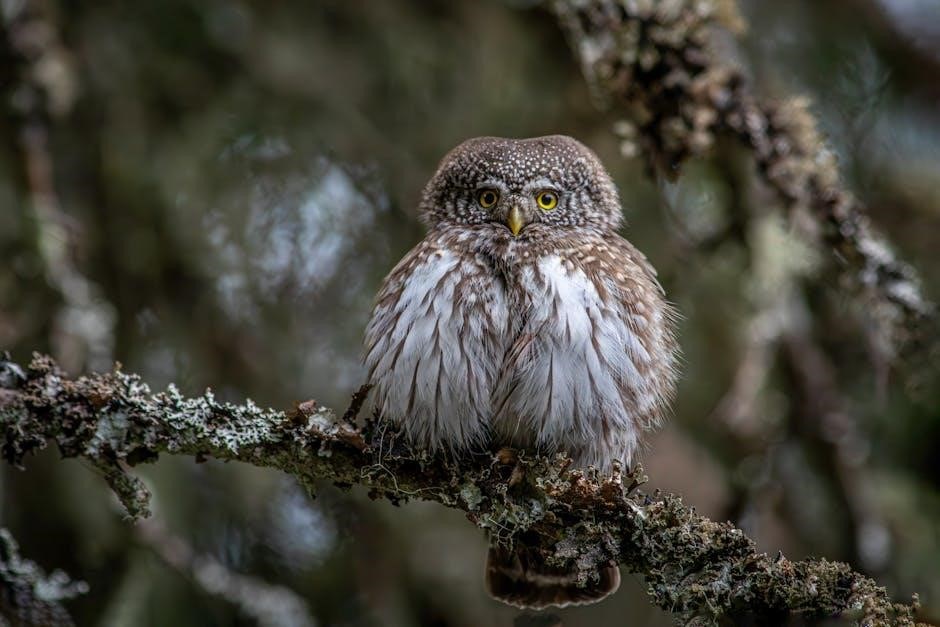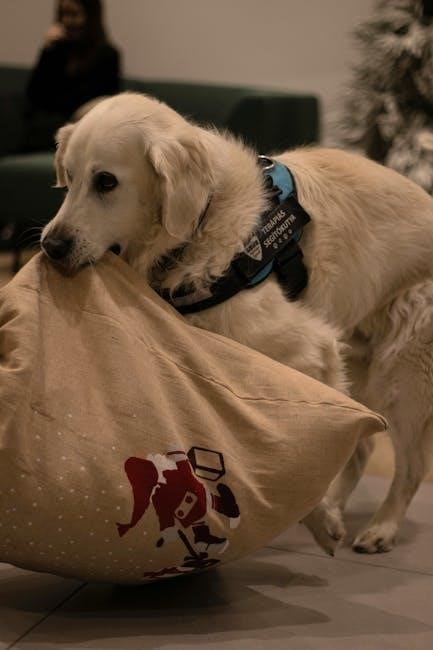Cadette Animal Helpers Badge Requirements
To earn the Cadette Animal Helpers badge, Girl Scouts must explore the diverse ways animals assist humans․ This includes understanding the historical and modern roles of animals, from providing safety to offering emotional support․
Badge Overview
The Cadette Animal Helpers badge, initially part of the “It’s Your Story – Tell It!” badge set introduced in 2011, encourages Girl Scouts to investigate the multifaceted relationships between humans and animals․ Updated in 2024, the badge aims to educate Cadettes on how animals contribute to human well-being and how they can support these animal helpers․ Earning this badge involves exploring historical connections, understanding the roles of service animals, and appreciating the emotional support animals provide․ By completing the badge requirements, Cadettes will gain insights into animal welfare and responsible interaction, fostering a deeper understanding of the human-animal bond and its significance in our shared ecosystem․ They will explore options through research, documentaries, and interviews․
Purpose of the Animal Helpers Badge
The purpose is to educate Cadettes about the significant ways animals assist humans, fostering an understanding of animal welfare and inspiring them to support and appreciate these vital contributions․
Understanding How Animals Help Humans
Animals play a myriad of roles in human society, extending far beyond mere companionship; They contribute significantly to our safety, emotional well-being, and physical capabilities․ From assisting individuals with disabilities to providing therapeutic support, animals offer invaluable services․ Service animals, for instance, aid people with visual or auditory impairments, while therapy animals provide comfort and reduce stress in hospitals and nursing homes․
Furthermore, animals participate in search and rescue operations, locating lost individuals and providing critical assistance during emergencies․ Their keen senses and unwavering loyalty make them indispensable partners in these high-stakes situations․ Understanding these diverse roles underscores the profound connection between humans and animals, highlighting the importance of respecting and supporting their welfare․ Recognizing the depth of this bond fosters empathy and encourages responsible interactions with all creatures․

Badge Requirements: The 5 Steps
The Cadette Animal Helpers badge requires completing five key steps․ These steps involve exploring human-animal connections, animal safety roles, emotional support, assistance to those with disabilities, and future possibilities․
Step 1: Exploring the Connection Between Humans and Animals
Step one focuses on understanding the deep-rooted bond between humans and animals․ Cadettes can explore how views of animals have evolved over centuries, from working partners to companions․ They might research the historical roles of animals in agriculture, transportation, and protection․ Another option includes watching documentaries that showcase the intricate relationship between humans and animals, analyzing how this connection has shaped both species․ Alternatively, Cadettes can delve into specific examples, such as how domestication has altered animal behavior and human societies․ Documenting these changes through reports, presentations, or creative projects fulfills this step and fosters a greater appreciation for the human-animal partnership that has shaped our world․ This step also helps to inform why animals are so important in human society․
Step 2: Discovering How Animals Keep People Safe
Step two highlights the ways animals contribute to human safety․ Cadettes can investigate how animals, like search and rescue dogs, assist in emergencies․ They could research different breeds and their specific skills in finding lost individuals or detecting danger․ Another option involves learning about animals that protect people from harm, such as guard dogs or animals used in law enforcement․ Alternatively, Cadettes might explore how animals can detect medical conditions, like cancer or impending seizures, providing early warnings; Presenting findings through presentations, reports, or creative projects such as skits demonstrates an understanding of how animals are trained to help people․ Also, this will help Cadettes appreciate the importance of proper training and care for these remarkable animal helpers․
Step 3: Understanding Animals’ Emotional Support
This step focuses on the emotional benefits animals provide to humans․ Cadettes can explore how animals reduce stress, lower blood pressure, and increase feelings of happiness and companionship․ Options include interviewing pet owners about the emotional support their animals provide, documenting these stories through writing, audio, or video․ Alternatively, Cadettes could investigate the use of therapy animals in hospitals, nursing homes, or schools, learning about their training and impact․ Another choice involves researching the science behind the human-animal bond, exploring how interaction with animals releases endorphins and promotes well-being․ Sharing these insights through presentations or creative projects showcases the profound emotional connection between humans and animals, highlighting their vital role in emotional health․
Step 4: Investigating Animals’ Assistance with Disabilities
This section delves into how animals aid individuals with disabilities․ Cadettes can research different types of service animals, such as guide dogs for the visually impaired, hearing dogs for the deaf, and mobility assistance dogs․ Investigating the rigorous training these animals undergo and the specific tasks they perform is essential․ They can also interview people with disabilities who rely on animal assistance, documenting their experiences and the impact these animals have on their independence and quality of life․ Another option involves volunteering at an organization that trains or provides service animals, gaining firsthand experience and understanding of their work․ By exploring these avenues, Cadettes can appreciate the invaluable role animals play in empowering individuals with disabilities․
Step 5: Considering Future Animal Assistance
This step encourages Cadettes to think critically about the future of animal assistance․ They can research emerging technologies and innovative ways animals might help humans in the years to come․ This might involve exploring the use of animals in medical diagnostics, such as detecting diseases like cancer, or in providing therapeutic interventions for mental health conditions․ Cadettes could also consider the ethical implications of these new roles and discuss the importance of responsible animal welfare practices․ They could even design a hypothetical animal assistance program that addresses a specific societal need, outlining the training, care, and benefits of their proposed program․ By engaging in this forward-thinking exploration, Cadettes can appreciate the potential for animals to continue enriching human lives in the future․
Changes to the Badge Over Time
The Animal Helpers badge was introduced in 2011 as part of the “Its Your Story- Tell It!” set․ The badge’s image and specific requirements were updated in 2024 to reflect current trends․
The Cadette Animal Helpers badge was originally released in 2011 as part of the “It’s Your Story – Tell It!” badge set․ This initial release aimed to encourage Cadettes to explore the multifaceted relationships between humans and animals․ The badge provided a framework for understanding how animals contribute to human well-being and society․
In 2024, the badge underwent revisions, including changes to the image and specific requirements․ These updates likely reflected evolving perspectives on animal welfare, the expanding roles of animals in assistance and therapy, and a desire to keep the badge relevant and engaging for contemporary Girl Scouts․ The updated requirements encourage Cadettes to explore the human-animal bond․

Activities to Fulfill Requirements
To complete the badge requirements, Cadettes can engage in research, watch documentaries showcasing human-animal interactions, and conduct interviews with pet owners or professionals working with animals․
Research, Documentaries, and Interviews
To fully explore the human-animal bond and satisfy badge requirements, Cadettes can delve into various activities․ They might conduct research on different animal assistance roles, examining historical shifts in human perspectives towards animals․ Watching documentaries that highlight the diverse ways animals support humans can be another avenue․
Furthermore, interviewing pet owners can provide valuable insights into the emotional and practical support animals offer․ Cadettes could document these interviews through writing, audio, or video recordings, capturing personal stories of companionship, service, and unwavering loyalty․ These combined efforts will help them discover the true impact of animals․

The Human-Animal Bond
The human-animal bond is a deep connection spanning millennia․ Animals contribute significantly to our lives by providing assistance, companionship, and emotional support, shaping our cultures and well-being․
Historical and Modern Roles of Animals
Historically, animals played crucial roles in human survival, providing assistance with farming, transportation, and protection․ The human-animal connection extends back over 15,000 years, evolving from basic needs to complex relationships․ Today, their roles have expanded significantly․ Modern animals assist in search and rescue operations, provide emotional support, and help people with disabilities․
Service animals are trained to aid individuals with physical and mental health challenges․ Moreover, animals offer companionship, reducing stress and improving mental well-being․ From ancient farmhands to modern-day heroes, animals continue to profoundly impact human lives, enriching our society and individual experiences․ The enduring human-animal bond reflects our intertwined history and shared future․

The Importance of Supporting Animals
Since animals greatly assist humanity, it’s crucial to advocate for their welfare․ They cannot voice their needs, so it is up to humans to protect and support them․
Speaking Up for Animal Welfare
Advocating for animal welfare involves understanding the various ways animals contribute to human lives, from providing companionship and emotional support to assisting individuals with disabilities․ By recognizing the profound impact animals have, we can become better advocates for their well-being․ This includes supporting organizations dedicated to animal rescue, conservation, and ethical treatment․
Furthermore, speaking up for animal welfare means educating others about responsible pet ownership, the importance of humane practices in agriculture, and the need to protect wildlife habitats․ It also entails advocating for stronger animal protection laws and holding individuals accountable for animal cruelty․ By taking action, we can ensure that animals receive the care, respect, and protection they deserve․
